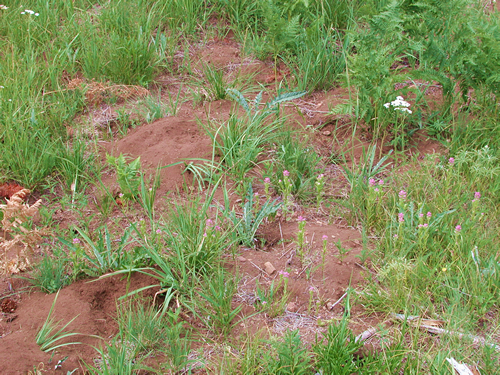Bunchgrass
Ridge![]()
Ecology and restoration
of conifer-invaded meadows:![]()
Research and adaptive management![]()
![]()
| Home > Research > 3. Gopher disturbance |
| 3. Gopher disturbance and meadow community structure |
 |
|
|
| Also
see Gopher effects on recovery from burning 
|
|
|
Soil disturbances by the western pocket gopher, Thomomys mazama, are conspicuous features of mountain meadows throughout the Cascades. Through their tunneling and mounding activities, gophers
Most studies of the relationships between gopher disturbance and plant community structure have been conducted in low-elevation prairies or grasslands of central and eastern North America. Studies from higher-elevation mountain ecosystems are less common. At Bunchgrass Ridge we have explored these relationships at two spatial scales—individual mounds and larger areas of meadow that encompass varying amounts of disturbance. In addition, we have considered the influence of castings, a distinctive feature of systems that experience a deep winter snowpack. A. Plant succession on gopher moundsB. Contributions of gopher mounds and castings to meadow community structure |
|
